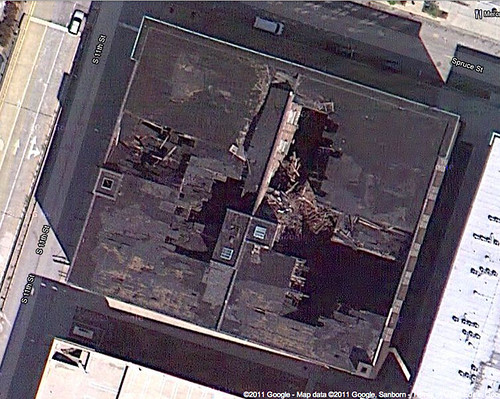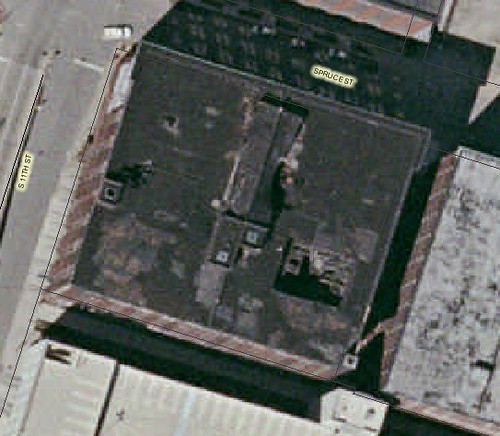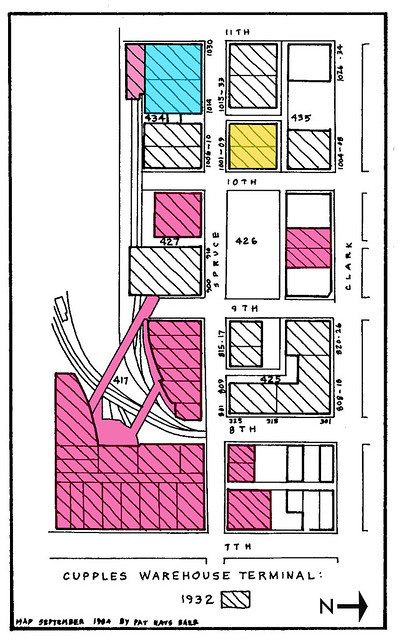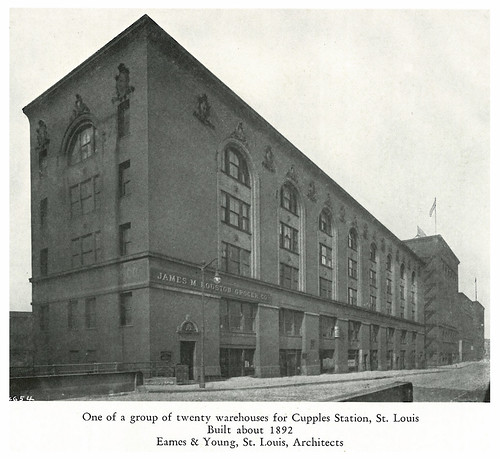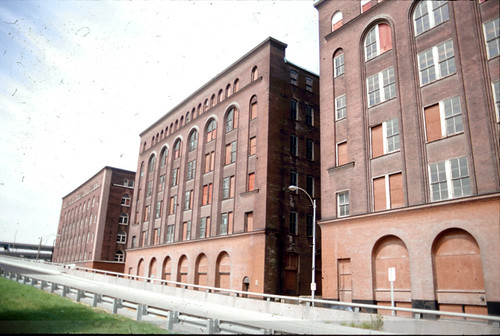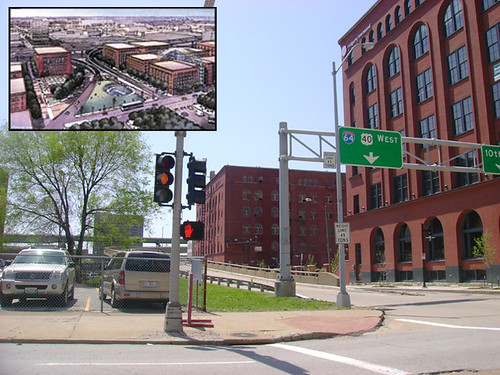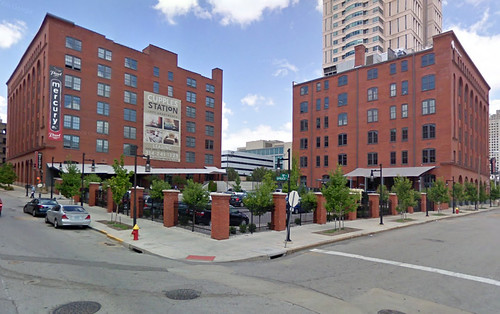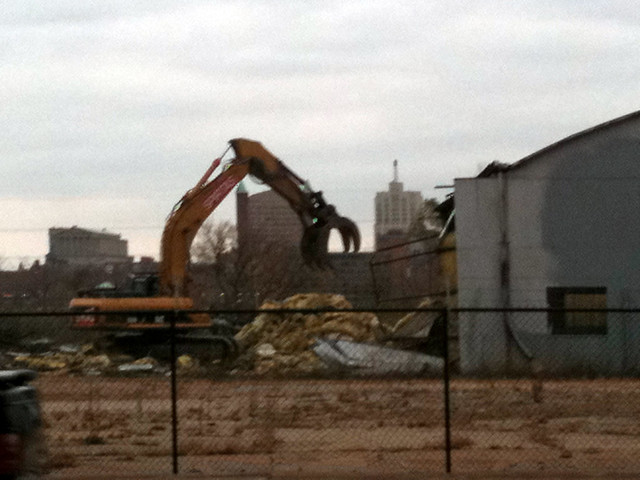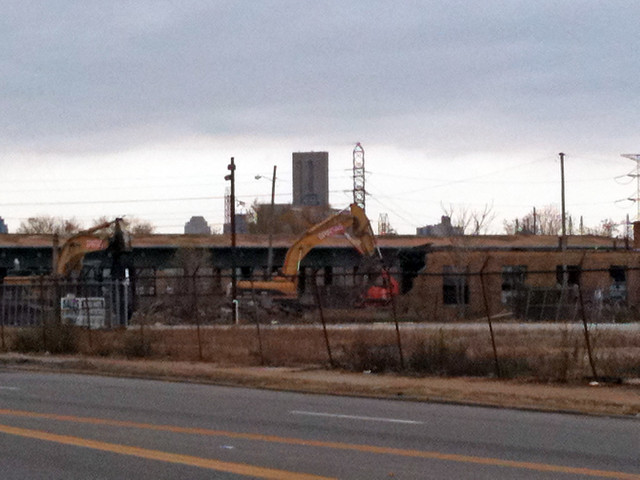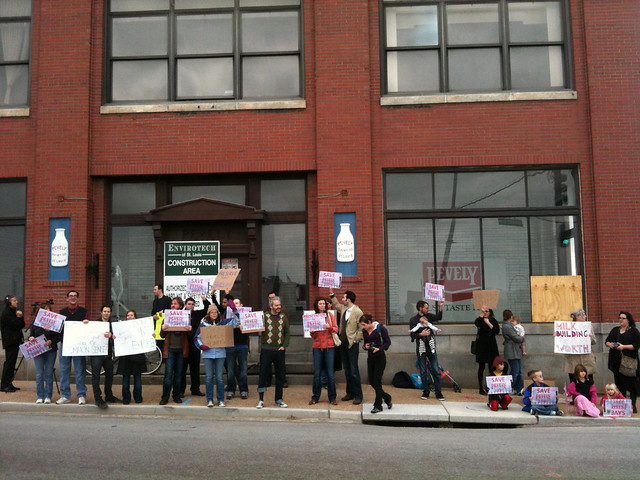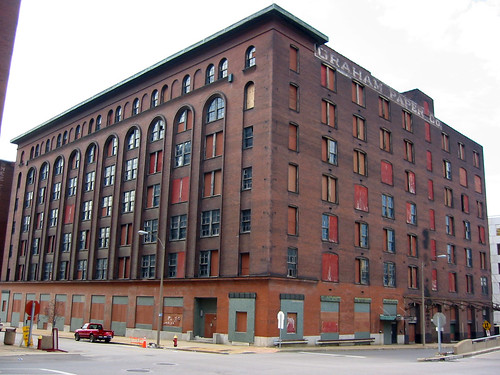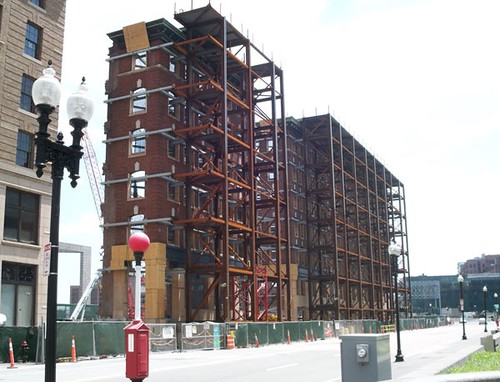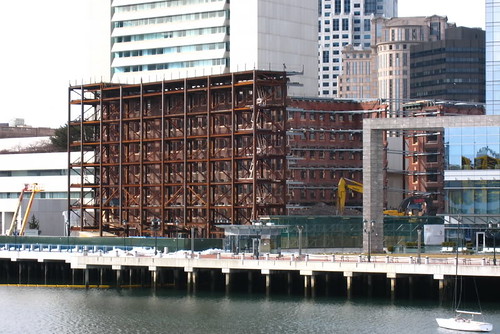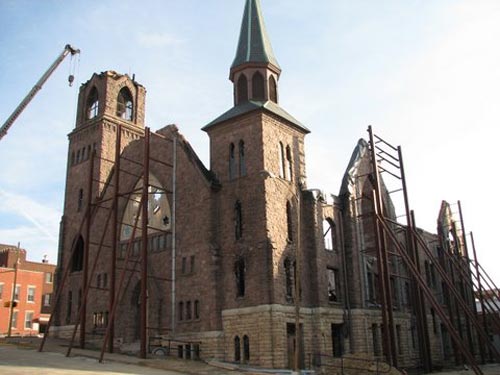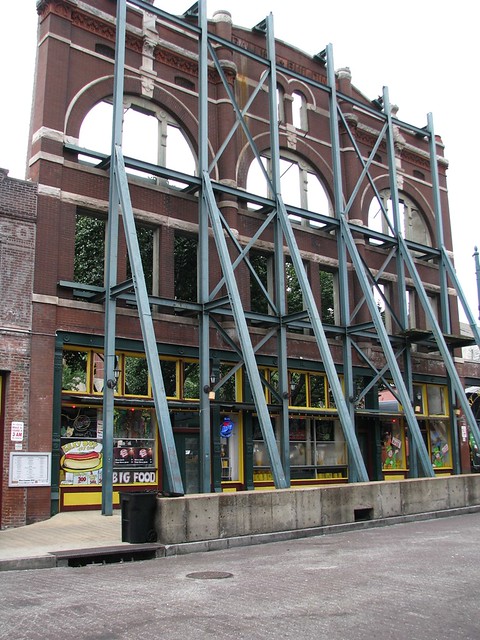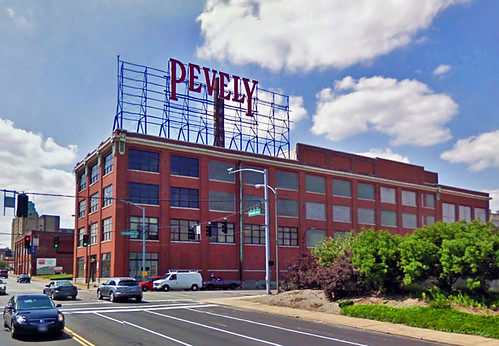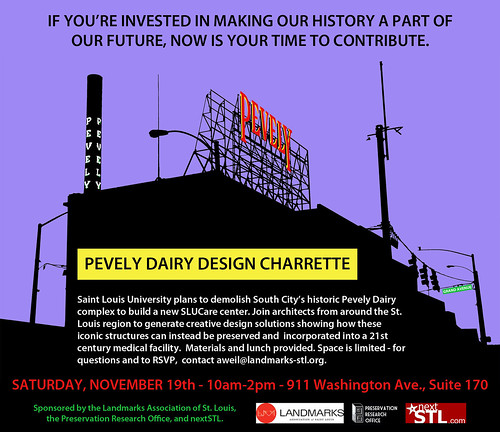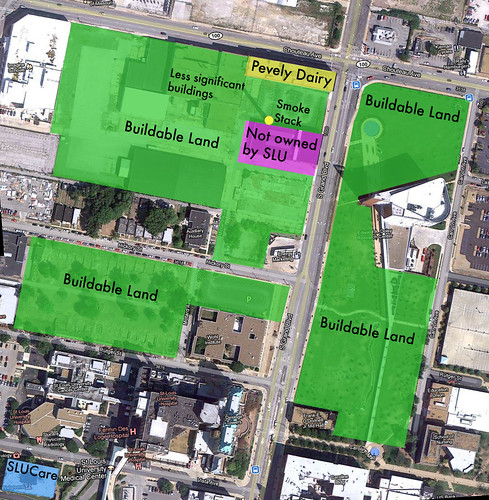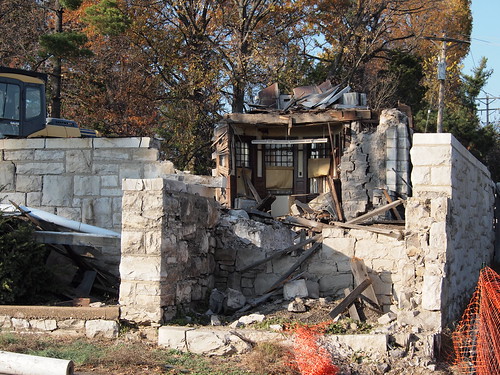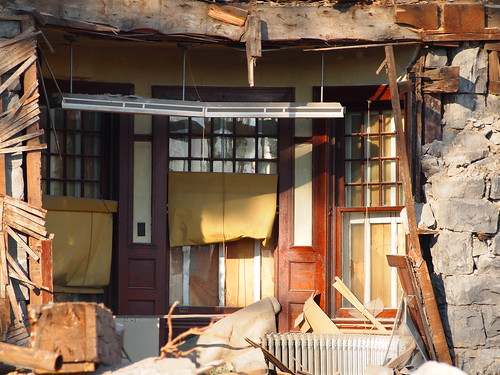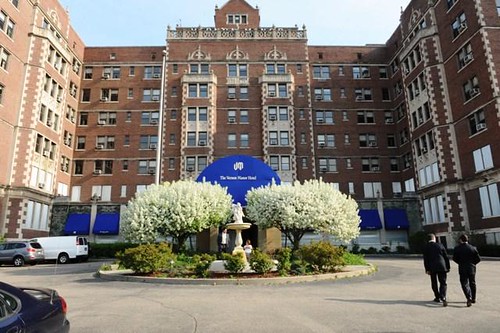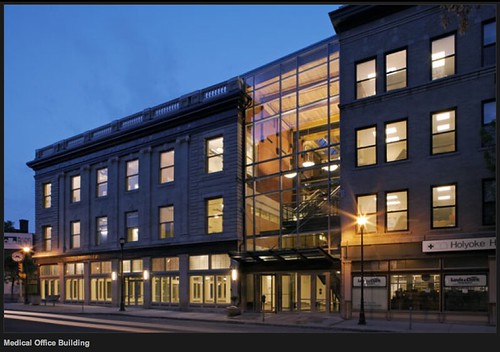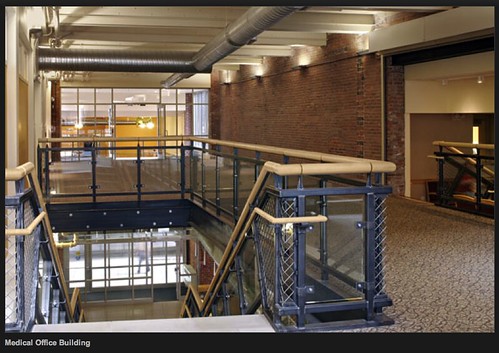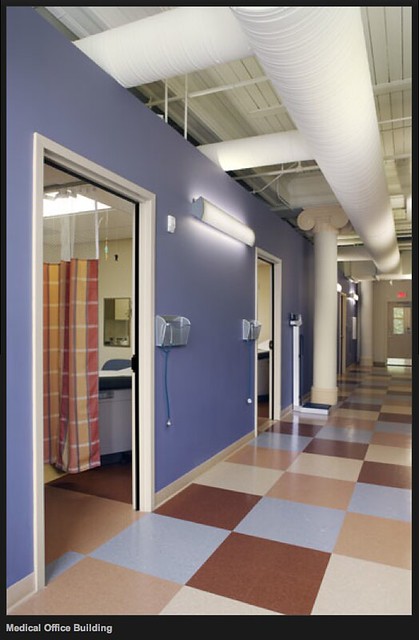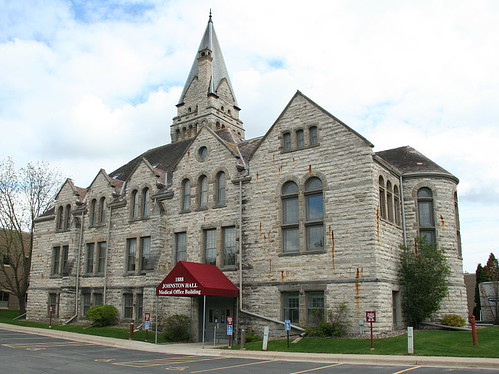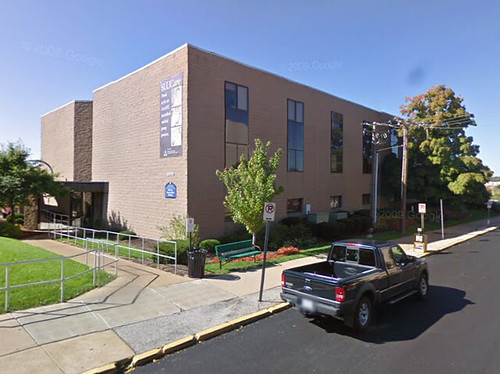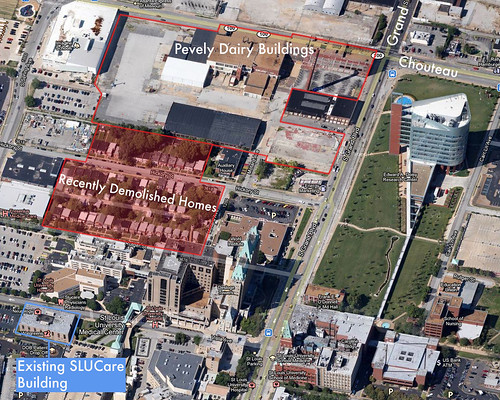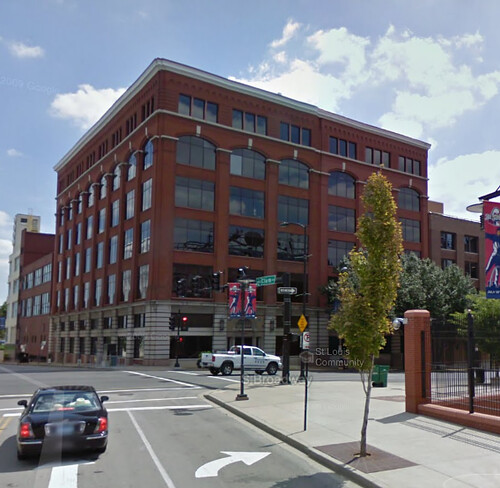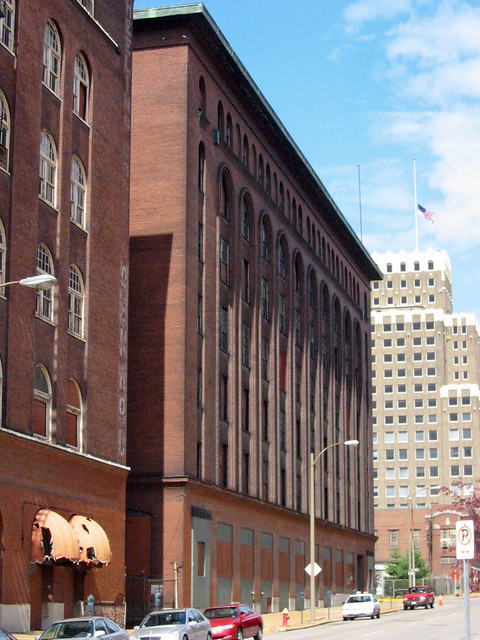
Last evening the Preservation Board unanimously upheld the Cultural Resources Office denial of the permit for demolition of Cupples Station warehouse #7. The preservation board raised many concerns over application including the lack of details establishing financial hardship and the fact that the owner, a partnership of Kevin McGowan and Nat Walsh, has owned the structure since 2006 and did nothing to stop the acceleration of deterioration.
Aerial from 2006 when McGowan Walsh bought the building shows a much smaller holes on the east side and possibly one small hole on the west side. At this point creating inexpensive temporary structures to span over the holes and keep water out of the building would have still been feasible.
The estimated cost of demolition was stated as being $675,000. Preservation Board member Alderman Antiono French brought up that the owner has not paid taxes on the building for the last three years, and there was also mention that the owners had lost Cupples buildings 8 & 9 to foreclosure. This makes one wonder how they planned to pay for the demolition cost.
One of the more intriguing testimony statements came from a lawyer for the St. Louis Treasurers office. He said that the Treasurer has been in discussions with the current owners of Cupples #7 about purchasing the property to protect their investment in the parking garage that the Treasurer built south of buildings 7 & 8. In this scenario the building would be gone, but he said they would also be happy if the exterior walls were stabilized so that the barriers could be removed from the streets. He did not indicate whether the Treasurer would buy the building at that point.
At the end of the testimony, the Board ultimately agreed with Betsy Bradley's assessment that the exterior walls should be stabilized to preserve the outer significant masonry structure. The question now becomes how that happens and who pays for it? Would the Treasurer be willing to chip in, or maybe the City which had offered up a $3,000,000 TIF for the redevelopment? Ultimately McGowan & Walsh should be forced to pay at least the amount they were going to spend for demolition.

